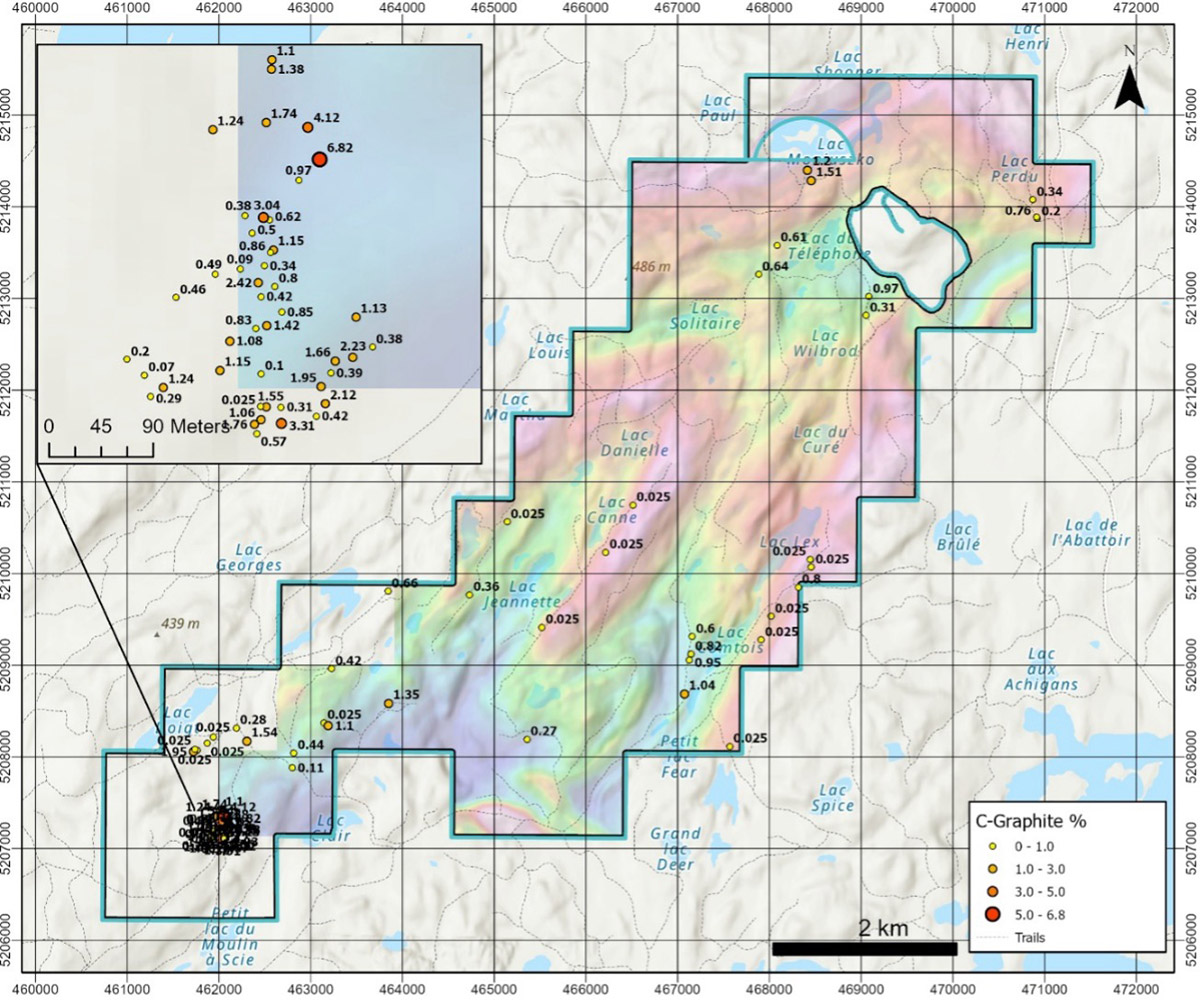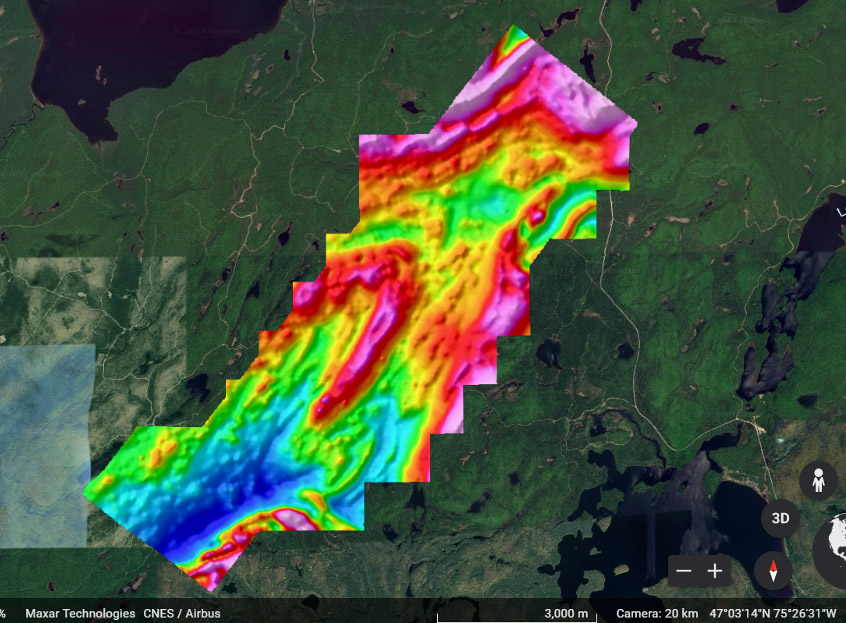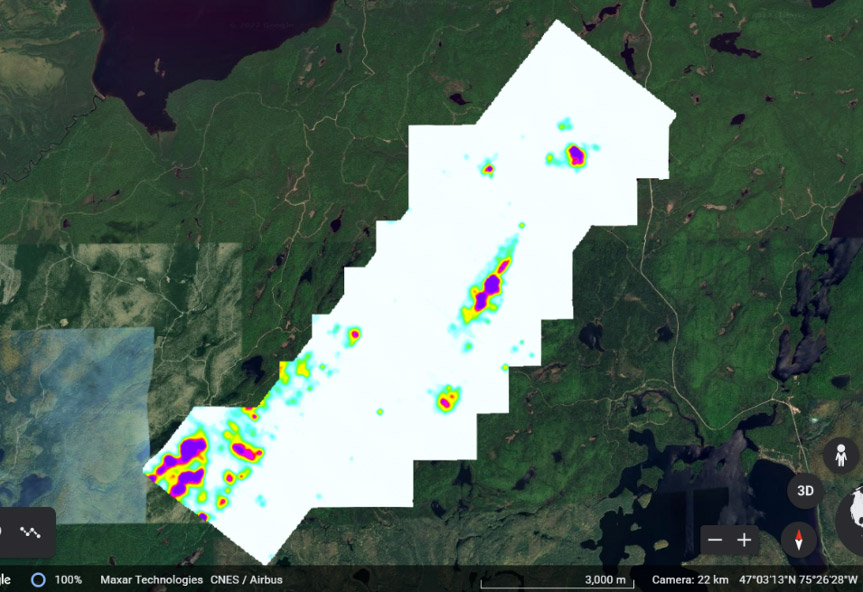Large parcel of open ground within favourable graphite bearing paragneiss and regional structures with two graphite showings.
Location: 55 km north of Mont-Laurier. Main logging road 7km east with a network of trails and roads through the proposed project
# of claims: 69
The 372-line-km survey flown over the 69-claim Dieppe project located 55 km north of Mont-Laurier identified 320 TDEM point anomalies with 24 having an intermediate to strong conductive response. Three linear TDEM trends show strong correlation with magnetic trends and are considered prospective targets for graphite-sulphide mineralization. One of these targets correspond with the known Lac Dieppe occurrence where visible flake graphite has previously returned up to 11.6% graphite (refer to reference no.1). Three other TDEM trends are associated with MAG lows or do not show any clear correlation to magnetic data. Graphite hosted within non-magnetic marble rocks may be the source of TDEM responses of this sort.

Lac Dieppe
Year discovered: 2000
Discovery: The mineralized zone was discovered in 2000 during geological mapping work. History of work: In 2000, Ministry of Natural Resources of Quebec – Geological cartography.
Lithology: The host rock is a graphite-bearing paragneiss that forms a single bed 10 cm thick in the middle of a sequence of centimetric to decimetric beds of biotite, gray or rusty quartzofeldspathic paragneiss and rusty diopside calcsilicate gneiss . This sequence is in contact with a decametric bed of quartzite (RG 2001-16).
Content: 11.6% Cg. The mineralization consists of graphite flakes 2 mm in diameter.
Lac Dieppe 1
Year discovered: 2000
Discovery: Mineralized zone discovered in 2000 during geological mapping work. History of work: In 2000, MRNQ – Geological cartography.
Lithology: The host rock is a calcosilicate gneiss composed of diopside, biotite, pyrite and graphite. It alternates with diopside marbles, diopside quartzites and diopsides (RG 2001-16).
Mineralization: Grade: 11.4% Cg. The mineralization consists of graphitic carbon.
2024 Results
A total of 84 selected grab samples were collected on the Dieppe property in 2024. Widespread graphite mineralization was identified as numerous spot anomalies with values greater 1% Cg. A distinct mineralized cluster measuring 300m long by 200m wide was identified in the southwestern part of the property. This cluster by is defined by numerous graphite values greater than 1% Cg with a maximum value of 6.82% Cg. Refer to Figure 4 for details.





